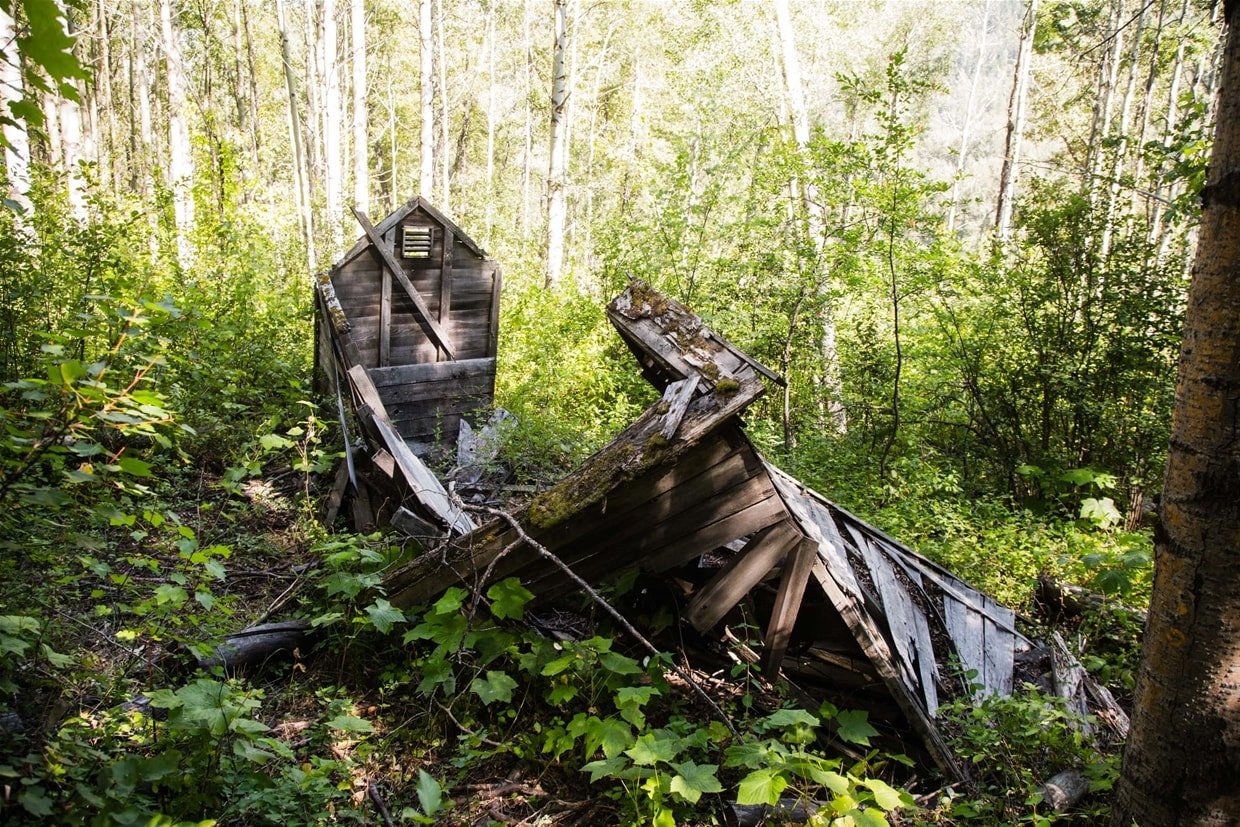Searching for British Columbia ghost towns? This article guides you through the most fascinating abandoned towns, from gold rush sites like Barkerville to mining ruins like Phoenix. Only a couple of structures remain in these ghost towns, highlighting their stark contrast from past prosperity. Explore their histories and discover what remains today.
Key Takeaways
-
British Columbia is home to numerous ghost towns that emerged during historical gold and mining booms, with notable examples including Barkerville and Bralorne, which provide insights into the region’s economic transitions.
-
Many ghost towns, such as Phoenix and Cassiar, illustrate the harsh realities of mining’s boom-and-bust cycles, showcasing how economic downturns led to their decline and abandonment.
-
Some ghost towns, like Waldo, were submerged due to dam constructions, while others, such as Coal Creek and Fort Shepherd, remain accessible via trails, allowing visitors to explore their historical significance amidst natural landscapes.
Historic Gold Rush Towns
In the 19th century, the lure of gold attracted waves of fortune seekers to British Columbia, resulting in numerous ghost towns that echo this era. The Cariboo Gold Rush notably led to the rapid creation of many towns, now silent witnesses to a time of gold fever. Once bustling with miners and merchants, these towns now provide an intriguing look into the past, with only a couple of structures remaining to tell their story.
Barkerville and Bralorne stand out as notable examples. These historic towns illustrate the economic boom of the 1860s and the dramatic shifts in population and fortunes once the gold resources were exhausted.
Barkerville
Barkerville, a thriving center during the Cariboo Gold Rush, quickly grew into a bustling town. The nearby river played a crucial role in Barkerville’s development, providing essential resources and transportation routes. Now preserved as a National Historic Site, it offers visitors a chance to explore well-preserved buildings and historical exhibits, stepping back in time.
A scenic drive leads to Barkerville, making it a unique destination for history enthusiasts and ghost town explorers. Its significance in British Columbia’s gold rush history remains undeniable, serving as a vivid reminder of a bygone era.
Bralorne
Bralorne experienced rise, fall, and brief resurgence. Initially a thriving gold mining community, its population dwindled after mining operations ceased in the 1970s. Attempts were made in 2002 to revive the town and restore its historical significance.
Despite these efforts, Bralorne remains largely abandoned, with remnants of its past still visible. The town’s history, marked by once-prosperous mining activities, reflects the transient nature of such communities, with only a couple of structures still standing as a testament to its former glory.
Mining Towns Left in Ruins
Mining booms have left numerous ghost towns across British Columbia, with abandoned buildings standing as silent witnesses to an era of intense industrial activity. Once vibrant communities, these towns fell into ruin as resources depleted and mining operations ceased, often following economic downturns and site abandonment.
Phoenix and Cassiar exemplify this phenomenon. Once bustling hubs of activity, these towns now lie in ruins, their derelict structures offering a haunting glimpse into the past.
Phoenix
Phoenix, once celebrated as the “highest city in Canada,” thrived due to its copper mining operations. The town peaked around 1919, bustling with activity. However, the end of World War I caused a significant drop in copper prices, leading to the shutdown of mining operations and the town’s rapid decline.
Today, Phoenix is a ghost town, its ruins a stark reminder of its former glory. Exploring the remnants provides insight into the transient nature of mining communities and the economic forces that shaped their fates, with only a couple of structures still standing.
Cassiar
Cassiar’s rise was fueled by asbestos mining, with the town reaching a peak population of 1,500 residents. The nearby river played a crucial role in Cassiar’s development, providing essential resources and transportation routes. Operations continued until 1992, when the asbestos mine closed, leading to the complete abandonment of Cassiar.
Remnants of Cassiar’s past, like the Catholic Church and tramline ruins, still stand, offering glimpses into the town’s historical significance. These derelict structures tell the story of a once-thriving mining community and its eventual transition into a ghost town.
Forgotten Towns Near Kootenay Lake
The serene landscapes near Kootenay Lake are dotted with ghost towns that once thrived during various mining booms. Now forgotten, these towns offer unique insights into the region’s historical development, with abandoned buildings serving as silent witnesses to a time of great promise and subsequent decline. Only a couple of structures remain, highlighting the stark contrast between their past prosperity and current deserted state.
Retallack and Zincton are two such towns in the south, each with its own story marked by periods of prosperity and eventual abandonment.
Retallack
Retallack was once a bustling silver mining town, known for its rich deposits and thriving operations. The nearby river played a crucial role in Retallack’s development, providing essential resources and transportation routes. Its significance in the mining industry remains notable, with several mining structures still observable.
Today, Retallack stands as a ghost town, with remnants of its past still visible. It has found new life as a skiing and mountain biking location, blending historical significance with modern recreational activities.
Zincton
Zincton, initially named Lucky Jim, thrived as a zinc mining town until its decline in the 1950s. The population dwindled, and today, only a couple of building foundations remain.
Proposals for developing a ski resort in the area suggest that Zincton’s landscape might change in the future, potentially reviving the area and adding a new chapter to its history.
Abandoned Settlements Underwater
Some ghost towns in British Columbia met a watery fate, submerged under lakes created by dam constructions. These underwater settlements hold secrets of the past, now hidden beneath the surface. Waldo is a prime example.
Once a thriving lumber town, Waldo’s strategic location supported steamboat refueling and railway connections. The nearby river played a crucial role in its development, providing essential resources and transportation routes. However, the construction of Libby Dam led to its submersion, transforming it into an underwater ghost town.
Waldo
Waldo’s history as a significant lumber town ended abruptly when floodwaters from Libby Dam submerged it in the early 1970s. Before the flooding, a devastating fire in 1926 had already left only a couple of buildings standing.
Today, Waldo’s remnants lie underwater near Lake Koocanusa, making it a unique ghost town accessible mainly by boat. Its story, marked by strategic importance and eventual submersion, remains a fascinating chapter in British Columbia’s history.
Ghost Towns Accessible by Trail

For hiking enthusiasts, several ghost towns in British Columbia can be reached via scenic trails. These trails offer a unique opportunity to explore abandoned locales, blending outdoor adventure with historical discovery.
Coal Creek and Fort Shepherd are two such ghost towns accessible by trail.
Coal Creek
Located near Fernie, Coal Creek was a vibrant mining community from 1898 until its closure in 1958. Its remnants can be explored via the Coal Creek Heritage Trail, a 7 km route following a former railway line and road.
Along the trail, visitors find educational panels and historical artifacts offering insights into Coal Creek’s past. The trail provides a vivid journey through the history of this once-thriving mining town, with only a couple of structures still standing as a testament to its former prosperity.
Fort Shepherd
Established as a trading post in the 1850s, Fort Shepherd became a ghost town by the 1870s. The nearby river played a crucial role in its development, serving as a vital transportation route and resource for the settlement. Accessible via trails leading to its historical ruins, it offers a unique glimpse into the past.
The remains of Fort Shepherd, including old buildings and structures, provide an intriguing exploration for history enthusiasts and hikers. With its rich history and scenic trails, this ghost town offers a perfect blend of adventure and historical discovery.
Industrial Towns Turned Ghostly
The decline of industrial activities in British Columbia led to the abandonment of several towns, turning them into ghost towns. Once bustling with industrial activity, these towns now lie in ruins, with only a couple of buildings standing as silent reminders of a bygone era.
Ioco and Kitsault exemplify this transformation.
Ioco
Ioco, an oil refinery town near Port Moody, supported around 200 residents at its peak. The nearby river played a crucial role in Ioco’s development, providing essential resources and transportation routes. Now largely deserted, it is characterized by many abandoned homes and boarded-up properties.
Ioco’s history as an industrial hub and subsequent decline reflect the economic shifts that led to its abandonment. Efforts to preserve the townsite highlight its historical significance.
Kitsault
Kitsault, established in the 1970s to support a magnesium mine, was abandoned shortly after the mine closed. Despite its short-lived industrial activity, the town remains well-preserved, with proposals to transform it into a hub for liquefied natural gas exports.
Kitsault’s future remains uncertain, but its history as an industrial town turned ghostly offers a fascinating narrative. Potential revitalization could add a new chapter to its story, but currently, only a couple of structures remain as a testament to its past.
Ghost Towns Tied to Railways
Railways played a crucial role in developing many towns in British Columbia. These towns, closely linked to railway expansions, experienced rapid growth and eventual decline as railway activities diminished.
Copper Mountain and Sandon exemplify ghost towns tied to railways.
Copper Mountain
Discovered in 1884, Copper Mountain became a significant mining community due to its proximity to railway lines. The town thrived for over five decades before mining operations ceased in 1958, leading to its abandonment.
The remnants of Copper Mountain, including historical structures and mining remnants, offer a fascinating exploration. Only a couple of buildings and features remain, testifying to the impact of railway connections on the development of mining communities.
Sandon
Sandon was once a bustling community with a peak population of around 5,000 residents, largely due to its role as a key transport and supply center during peak railway activity. The nearby river played a crucial role in Sandon’s development, providing essential resources and serving as a landmark for the town. Established in the 1890s, rival railways competed to service the booming mining town.
Sandon’s significance extended beyond mining operations; it was the first fully electrified town in British Columbia, thanks to its hydroelectric power plant established in 1897. Although transformed into an internment camp during World War II, the town’s historical ruins and electrification legacy still draw visitors intrigued by its rich past.
Summary
The ghost towns of British Columbia offer a captivating journey through the province’s rich history, from the glittering days of the gold rush to the rise and fall of industrial and railway towns. These abandoned settlements, each with their unique stories and remnants, provide a haunting yet fascinating glimpse into the past, with only a couple of structures still standing as silent witnesses to their former glory.
Preserving these ghost towns is crucial, not only for their historical value but also for their potential to educate and inspire future generations. As we explore these forgotten places, we are reminded of the transient nature of human endeavors and the enduring legacy of those who once called these towns home.
Frequently Asked Questions
What caused the decline of many ghost towns in British Columbia?
The decline of many ghost towns in British Columbia was primarily caused by the depletion of resources, economic downturns, and the collapse of key industries like mining. Ultimately, these factors led to abandonment as communities could no longer sustain themselves.
Are there any ghost towns in British Columbia that are accessible by hiking trails?
Indeed, ghost towns like Coal Creek and Fort Shepherd in British Columbia are accessible through hiking trails, providing a captivating mix of history and outdoor experience.
How did the construction of Libby Dam affect the town of Waldo?
The construction of Libby Dam resulted in the complete submersion of the town of Waldo, effectively transforming it into an underwater ghost town, with the majority of its structures destroyed, except for a relocated historic church. This significant alteration underscores the profound impact of infrastructural development on local communities.
What makes Barkerville a significant ghost town to visit?
Barkerville is significant for its status as a well-preserved National Historic Site, showcasing the history of the Cariboo Gold Rush through its authentic buildings and exhibits. This allows visitors to gain a vivid glimpse into the past.
Are there any proposals to revitalize abandoned towns like Kitsault?
There are indeed proposals to revitalize Kitsault by transforming it into a hub for liquefied natural gas exports, aiming to breathe new life into the abandoned town. This initiative could significantly alter the region’s economic landscape and future prospects.






